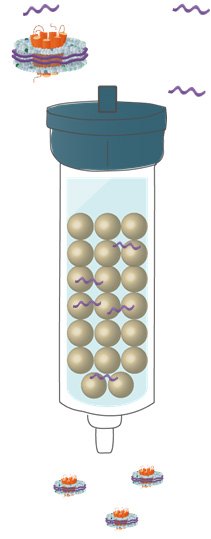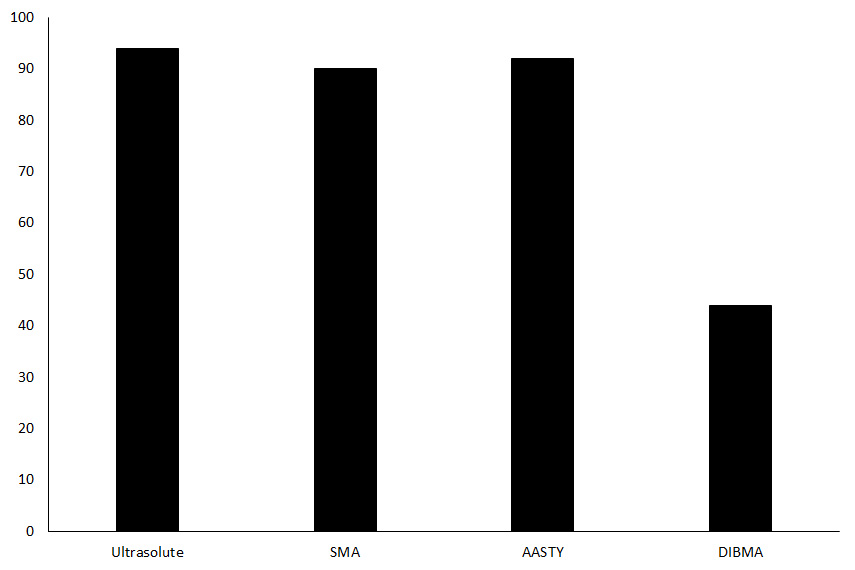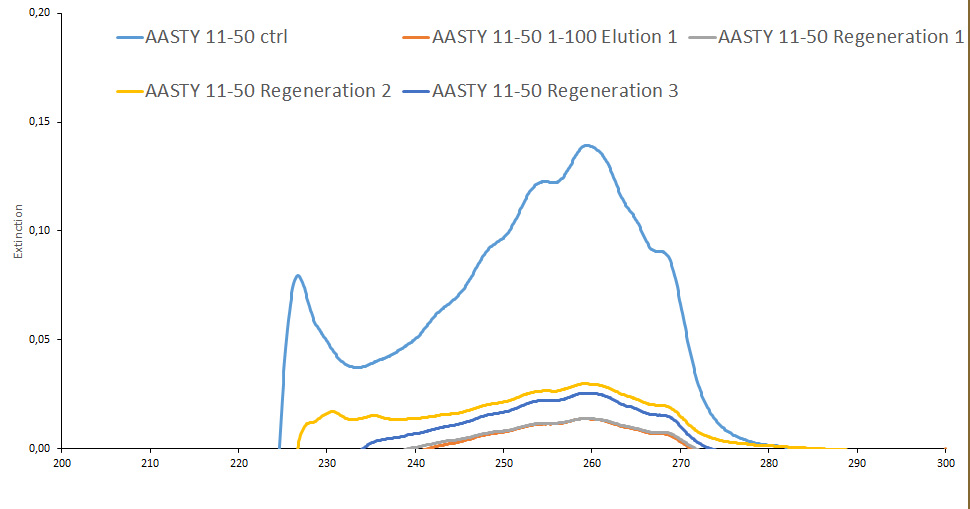PolyHunter Agarose (50 % Suspension)
Order number: 19103
Description
Solubilization of membrane protein using synthetic copolymer nanodiscs has a lot of advantages over traditional membrane protein solubilization methods.
Cube Biotech's PolyHunter Agarose Resins and MagBeads solve one of the few remaining issues with this product. After solubilization, some remaining free copolymer molecules can interfere with the subsequent affinity chromatography. Our PolyHunter products can deplete up to 99% of these interfering copolymer molecules from your solubilizate.
PolyHunter Agarose Resin is compatible with all nanodisc copolymers that CubeBiotech offers. Therefore it is ideally suited to be purchased in conjunction with our Synthetic nanodisc Screening Kit Maxi.
Note: PolyHunter Products are also available as magnetic beads and can be reused up to 5 times. The corresponding regeneration procedure can be found in the matching protocol PDF files.
Cube Biotech's PolyHunter Agarose Resins and MagBeads solve one of the few remaining issues with this product. After solubilization, some remaining free copolymer molecules can interfere with the subsequent affinity chromatography. Our PolyHunter products can deplete up to 99% of these interfering copolymer molecules from your solubilizate.
PolyHunter Agarose Resin is compatible with all nanodisc copolymers that CubeBiotech offers. Therefore it is ideally suited to be purchased in conjunction with our Synthetic nanodisc Screening Kit Maxi.
Note: PolyHunter Products are also available as magnetic beads and can be reused up to 5 times. The corresponding regeneration procedure can be found in the matching protocol PDF files.

Datasheets
Lab Results


S: Original solubilizates, both of them containing the same amount of protein
FT: Flow-through after the binding step of the AC. The Polyhunter treated flow-through contains less protein and therefore more has successfully bound to the affinity beads.
W: Wash fractions (near invisible), in both cases next to no protein was eluted during the washing steps.
E: Elution fractions, PolyHunter treated sample shows a higher protein yield.



FAQ
Can I have the PolyHunter Agarose Resin Datasheet or protocol?
Do PolyHunter beads also deplete AASTY / DIBMA / SMA / Amphipols?
Yes, it does. Small note: The depletion of DIBMA is a little bit less efficient. Therefore, it is recommended to perform the depletion protocol for DIBMA twice.
How often can I reuse PolyHunter beads?
Properly used and regeneration, PolyHunter beads can be reused up to 5 times.



